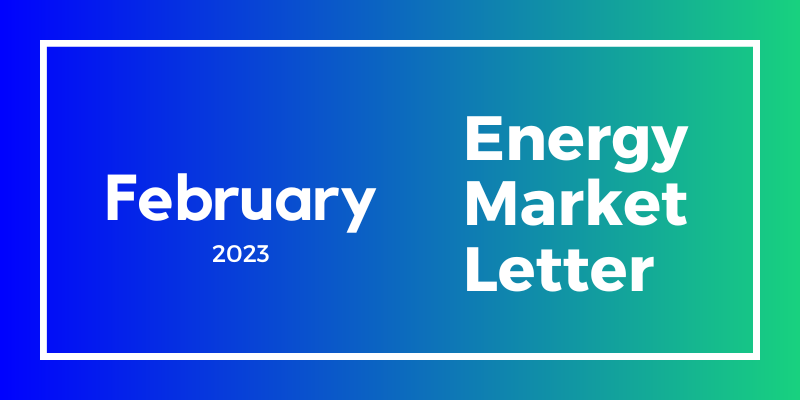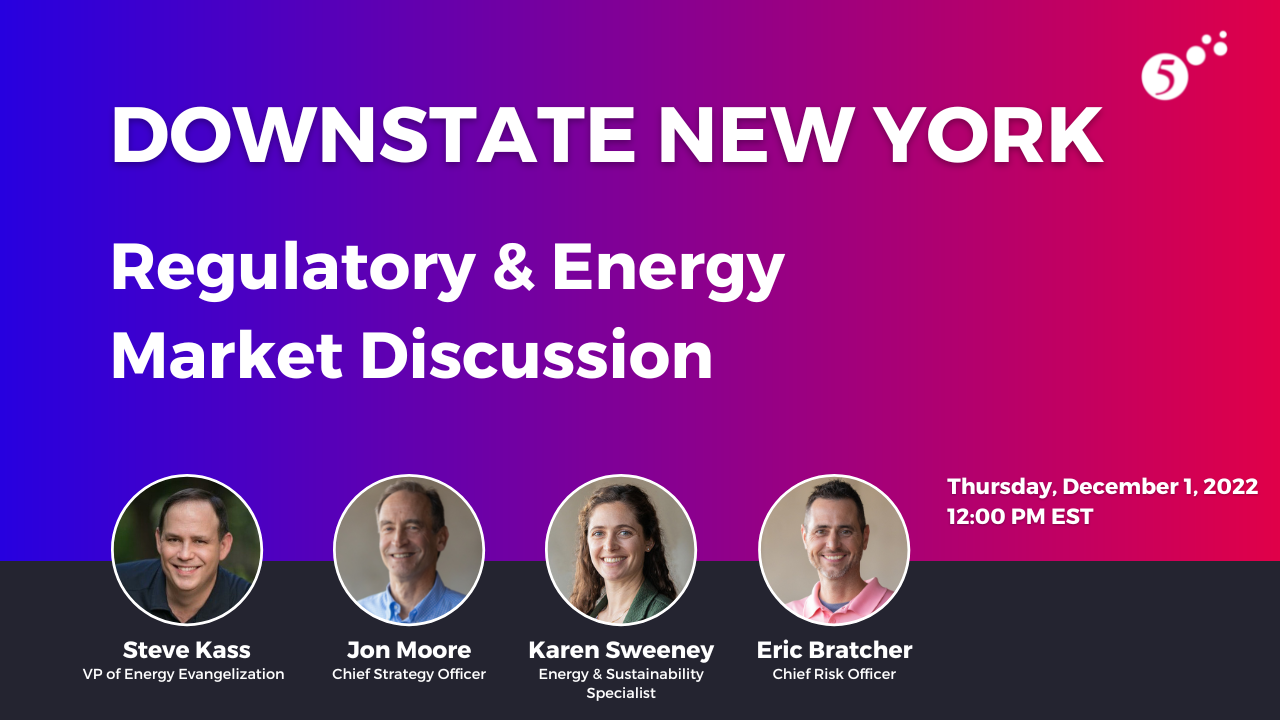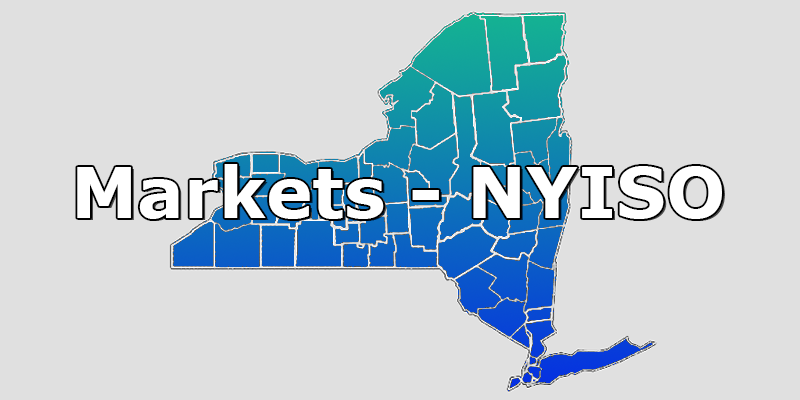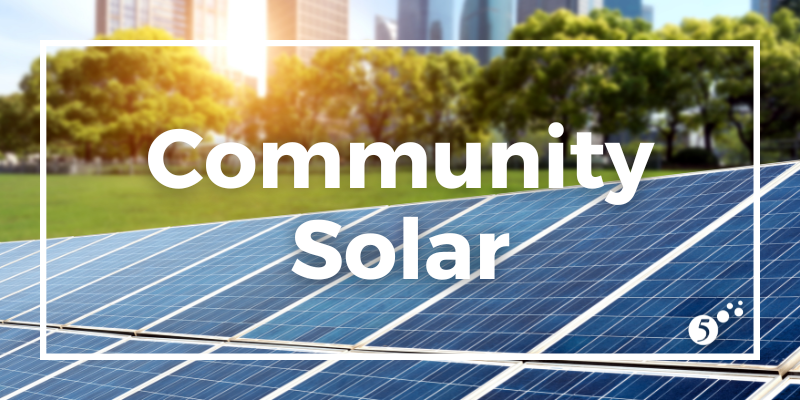On behalf of the team at 5, I am pleased to forward our February market letter. This letter discusses: (i) the recent fall in natural gas prices and increasing natural gas price volatility, (ii) the 188th Congress and the potential impact of the election on Federal and State energy policy in 2023, and (iii) how the electricity grid held up during Winter Storm Elliott and the February cold snap.
12 min read
February 2023 - Energy Market Letter
By Jon Moore on February 22, 2023
Topics: Markets Natural Gas NYISO ERCOT Sustainability Newsletters Education Renewables
1 min read
Webinar Recording: Upstate New York Regulatory and Markets Discussion
By 5 on February 2, 2023
Topics: Markets NYISO Videos Education
1 min read
Webinar Recording: Downstate New York Regulatory & Energy Market Discussion
By 5 on December 2, 2022
Topics: Markets NYISO Videos Education
3 min read
How LNG Prices in Boston Affect New York
By 5 on November 29, 2022
Volatility continues to be the name of the game in the energy markets for Downstate New York and New England. An example is the rollercoaster ride of international liquefied natural gas (LNG) prices that rose to record all-time highs above $90/MMBtu in September before falling back down below $30/MMBtu in November. This recent drop in LNG prices has taken some of the premium out of both power and natural gas prices for this winter, but the cooler-than-normal temperatures over the past two weeks seem to have added a bit of fear into the minds of energy traders who are concerned that this could signal a colder than average winter.
Algonquin is one of the major pipelines that carry natural gas into New England from its origination point in New Jersey. The price for this winter’s (December – March) gas delivered on Algonquin is shown in Figure 1. This chart shows that prices in late July and August were trading near $35/MMBtu, but as international LNG prices fell throughout September and October, prices for this winter’s delivery dropped down to a low of $20, before rallying back up to around $28/MMBtu during the second half of November.
Topics: Markets NYISO
4 min read
Community Solar in New York State
By 5 on November 28, 2022
Community solar is a financial structure implemented by states and utilities that allows the financial benefits of solar electricity production to be shared with members of the community. Here is how it works: A solar developer builds a solar project and sells all the power and renewable energy credits (RECs) generated to the utility in exchange for “solar credits”. Those solar credits are applied as a dollar value credit to utility bills, reducing the amount owed for electricity provided by the utility. The developers then sell their solar credits to members of the community at a discount. Community members sign contracts with developers to purchase solar credits at a set discount rate, a percentage savings on the dollar value of the solar credit. In New York State, the market-rate discount is 10%. That means that by signing a contract with a developer, an electricity customer in New York can pay $90 to a developer for solar credits that will reduce the customer’s utility bill by $100. In some cases, that $90 is paid to the solar developer (or a third-party billing company hired by the developer), and the $100 solar credit is applied to the customer’s utility bill. New York has consolidated billing, which means there are not always two separate utility bills. The $10 savings is subtracted directly from the utility bill and the customer pays only $90 to the utility. In the end, the developer receives 90% of the per kWh value of solar and the remaining 10% of the value is spread among the community solar subscribers.
Topics: Markets NYISO Renewables
10 min read
November 2022 - Energy Market Letter
By Jon Moore on November 2, 2022
On behalf of the team at 5, I am pleased to forward our November market letter. This letter discusses: (i) the upcoming Mid-Term Elections, and how the results could impact energy policy; and (ii) the challenges facing grid system operators in Texas, New England and New York as they work to integrate large volumes of intermittent resources into the grid mix.
The Mid-Term Elections
Recent polls favor Republicans to take control of the House and perhaps the Senate as well. As a result, several clients have asked what such a change in Washington could mean for energy policy. The question is particularly interesting because the landmark Inflation Reduction Act (IRA), which allocated some $369 billion to the energy sector, was passed by the Senate and the House without a single Republican vote.
The Inflation Reduction Act: The short answer is that the election results will probably have little effect on energy policy. While a change in control of the House or the shift of a single Senate seat would have doomed passage of this legislation, since it was passed and signed into law by President Biden, it will be difficult to repeal it. Even if the House and Senate pass legislation to repeal or amend portions of the IRA, President Biden has veto power, and overriding a veto requires a vote of two-thirds of the members in the House and Senate. This is good news for developers of renewable power, energy storage, electrical vehicle manufacturers and others that will benefit from the incentives found in the IRA. But this does not mean that the IRA and its various energy incentives are immune from challenges in the courts.
There are some interesting parallels between the IRA and the Affordable Care Act (ACA). Like the IRA, the Democrats used budget reconciliation to get the ACA approved by the Senate, and all Republicans in the House and Senate opposed the ACA. President Obama signed the ACA in March 2010, and in the November 2010 mid-term elections, the Democrats lost control of the House, in part, because of opposition to the ACA. The new congress did not reverse or upend the ACA, in part because politicians have little appetite for taking benefits away from voters. Yet the law became the subject of extensive legal challenges, one of which ended up in the Supreme Court.
While there is considerable opposition to the IRA, and it will undoubtedly face legal challenges, even though the law does not appear to be subject to the same serious constitutional challenges (for example, the constitutionality of the insurance mandate) that faced the ACA. In addition, as in the case of the ACA, we expect that in the two years remaining in the Biden Administration, a significant amount of the benefits will be granted to various energy projects. Once grants are made, it will be difficult if not impossible to reverse them.
Congressional Oversight: While the IRA may be safe from legal challenges, we expect that a Republican controlled house will use its oversight powers to review almost all aspects of the IRA and other programs that address climate change. This could certainly cause some delays in the implementation of the IRA’s programs and slow or halt other efforts to address climate change such as the SEC’s plan to require ESG reporting. For example, comments from Rep. Garland “Andy” Barr of Kentucky, a member of the House Financial Services Committee, indicated that ESG principles, “will be one of the major focuses of oversight of a Republican majority” adding that “My view is that ESG investing is a cancer within our capital markets,” Barr said. “It is a fraud on American investors.”
On the state level, we have already seen several states, pushing back against BlackRock and other investment firms that prioritize ESG principles. Texas has passed legislation that restricts the state’s retirement and investment funds from doing business with firms that “boycott” the oil and gas sector. Echoing this approach, Louisiana Treasurer John Schroder recently pulled $794 billion in pension fund money from BlackRock funds due to their use of ESG criteria in making investment decisions. “Your blatantly anti-fossil fuel policies would destroy Louisiana’s economy,” Schroder said. “In my opinion, your support of ESG investing is inconsistent with the best economic interests and values of Louisiana,” Schroder said.
Other than some minor changes to the approval process to FERC commissioners, we cannot think of other ways that a change in House or Senate leadership will impact federal energy policy – but as noted above, there is no shortage of ways in which the House and Senate can investigate the energy industry.
Looking past the mid-terms, if a Republican candidate is elected President in 2024, we might see an effort to pass legislation repealing the IRA. When President Donald Trump was elected in November 2016, Vice President Mike Pence stated, “President elect Donald Trump will prioritize repealing President Barack Obama’s landmark health care law right ‘out of the gate’ once he takes office.”
But as I expect will be the case with the IRA, once the energy community is offered the $369 billion in incentives, it will be very difficult for a future administration to repeal these benefits.
Permitting Reform: While repealing the IRA may be top of mind, the fate of Sen. Manchin’s effort to expedite permitting of critical energy infrastructure is equally important. In the run up to passage of the IRA, Senate Majority Leader Schumer agreed to support Manchin’s permitting bill (which included a requirement that Federal Agencies approve the controversial Mountain Valley Pipeline that Manchin supports) in exchange for Manchin’s support of the IRA. The bill seemed to be a good compromise, angering both Republicans who said it did not do enough for the fossil fuel industry and Democrats who said it did too much.
After the mid-term elections, it will be interesting to see if the Manchin bill can form the basis of bipartisan legislation that addresses the need to upgrade the nation’s energy infrastructure. As we note in the last section of this letter, there is a growing consensus among all participants that the grid envisioned by the energy transition does not yet exist. A recent Washington Post story is emblematic of the issue faced by new generation and transmission projects across the nation.
In this case, nearly ten years into the permitting process, a geo-thermal company had started construction of a plant that would provide carbon free energy to California residents. Late into this process, developers found out that: (i) the warm water drawn from the earth to power generation may threaten a rare toad, and (ii) the project’s location impinges on a sacred healing place for the Shoshone Tribe. The U.S. Fish and Wildlife Service has ordered the project stopped, while the Bureau of Land Management has pointed to the project as one of the ways the Biden administration is successfully confronting the climate crisis. This is just the kind of permitting delay that the Manchin bill was designed to address.
Intermittent Resources and The Energy Transition
Intermittent resources are generating assets that are not continuously available such as electricity that comes from wind farms and solar arrays. The growth of intermittent generation continues to challenge system operators who are responsible for ensuring a reliable supply of electricity. In the balance of this letter, we discuss ways in which intermittent supplies are challenging three markets, ERCOT, the New England ISO (NEISO) and New York ISO (NYISO).[1]
ERCOT: In ERCOT, the state in the country with the highest volume of wind and solar generation, we are clearly seeing the challenge that intermittent generation places on the system operators responsible for managing the reliability of the grid. As shown in Figure 1, on one day in Mid-October, wind resources generated approximately 18,000 MWs in the morning and only 1,200 MWs in the afternoon. The variation of solar output is equally dramatic. The chart below shows the combined hourly output of wind and solar over the last several weeks.
Topics: Markets Natural Gas NYISO ERCOT Sustainability Newsletters Education Renewables
3 min read
Big Risks this Winter
By 5 on September 29, 2022
Forward commodity markets were created to allow market participants to mitigate price risk for a given commodity. Long before the world ran on oil and natural gas, agricultural commodities traded in the forwards. By the 1860s, the Chicago Board of Trade was using standard instruments to trade wheat, corn, cattle, and pork. By the 1870s, the New York Mercantile Exchange was created by a group of Manhattan dairy merchants looking to standardize the chaotic butter and cheese markets. Over the next 100 years, these markets matured and expanded, but their purpose has remained the same: to create a marketplace that allows buyers and sellers to access a standard and liquid market that mitigates forward risk to commodity price volatility.
Topics: Markets NYISO
2 min read
A Not-So-Hot Summer
By 5 on August 31, 2022
As the calendar flips from August to September, ICAP management season is winding down, school is back in session and both the Mets and the Yankees are in first place. And while this summer was pretty hot for New York baseball, it was very ordinary in terms of the temperature. The months of July and August are particularly important for electricity customers in New York because a significant portion of next year’s electricity bill, the capacity obligation, is based on how much electricity a meter uses on the grid’s one highest hour of demand during those two months.
Topics: Markets NYISO
2 min read
Energizing the Empire State
By 5 on July 28, 2022
NYISO Creating More Access to Renewables
On July 11, New York celebrated the commissioning of the Empire State Transmission line. The 20-mile line connects the Dysinger switchyard in Royalton to the East Stolle switchyard in Elma, creating a new transmission hub in Western New York (see Figure 1). The $180 million power transmission line upgrade enables an additional 3,700 MWs of renewable energy to be transmitted throughout the state.
Topics: Markets NYISO
1 min read
Can NYC Go All-Electric?
By 5 on June 29, 2022
The All-Electric Building Act, known as New York S6843C, has died on the proverbial vine without getting a vote from the full New York State Senate or Assembly.







